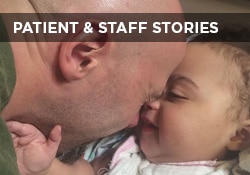This website uses cookies so that we can provide you with the best user experience possible. Cookie information is stored in your browser and performs functions such as recognising you when you return to our website and helping our team to understand which sections of the website you find most interesting and useful.

Susan E. Mazer, Ph.D. Blog
Thoughts and ideas on healthcare
Hi, and welcome to my blog! I'm Susan E. Mazer -- a knowledge expert and thought leader on how the environment of care impacts the patient experience. Topics I write about include safety, satisfaction, hospital noise, nursing, care at the bedside, and much more.
How Social and Health Inequities Impact the Patient Experience
March 2, 2018
 When I recently called my dermatologist to make an annual appointment, the first question I was asked was about my insurance. When I went in for a colonoscopy, before anything else, I had to produce my insurance card.
When I recently called my dermatologist to make an annual appointment, the first question I was asked was about my insurance. When I went in for a colonoscopy, before anything else, I had to produce my insurance card.
In fact, not one healthcare treatment in the U.S. is provided without an insurance card. There are exceptions, of course. But, I am referring to the system that defines healthcare in this country.
The patient experience begins long before a doctor’s visit or any diagnostic procedure. It begins when patients are not patients but are functioning people living their lives.
Their sense of self and identity in relationship to their family, peers, and community informs how they approach a physician or nurse. Whether they tell their truth about their health and their personal history.
No Separation in the ED
Most of us do not visit clinics that care for the homeless and poor. But, in the emergency room, there is little separation among people, if any.
For the homeless, the poor, the uninsured or underinsured, not feeling like they are on equal footing with others when entering an emergency room is terrifying. Not being sure of the economic impact (more than the dollar amount) that an illness will have on their family and their future brings even more stress.
And, feeling that they are in a hostile environment due to obvious or perceived inequities makes the whole experience worse before it even starts.
Government Policies Are Not the Answer
While the World Health Organization (WHO) has long pointed to health inequities globally, changes in health policies have not changed or eliminated the underlying social and economic factors that are the root of the problem.
From WHO “…social factors, including education, employment status, income level, gender, and ethnicity have a marked influence on how healthy a person is. In all countries – whether low-, middle- or high-income – there are wide disparities in the health status of different social groups. The lower an individual’s socio-economic position, the higher their risk of poor health.”
As for the patient experience, people who work for government agencies are not at the bedside. They administer no injections, take no blood for testing, and clean zero bathrooms.
Government agencies are not, by their nature compassionate or caring. In fact, government agencies are represented by policies that do not take into account the life situation for those they impact.
The patient experience is about the immediacy of one human being connecting with another. It is so immediate and personal that to think it can be controlled by government policies that are driven by HCAHPS survey responses is wrong in so many ways.
The Meaning of Equality in Healthcare
Equality does not exist in nature or in society. And yet, we throw the word around as if we know what it really means.
I suggest that moving beyond equality means that you give deference to those you care for, offer respect in ways they may not even be used to, believe them when they tell you of their suffering, and tap into your own personal vulnerability to reach their humanity.
Personally, I don’t want to be equal to other patients. I want to matter to those who care for me.
P.S. If you like this post, please do me a favor and share on LinkedIn, Twitter, Facebook, etc. Also to get automatic notices when a new post is published, please subscribe. No spam – just great content. Thanks!










